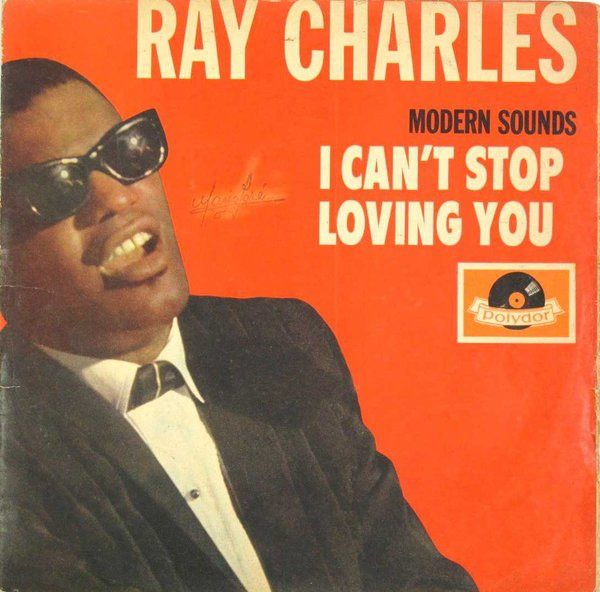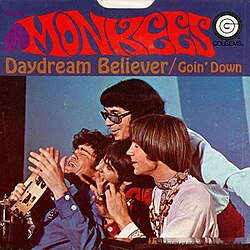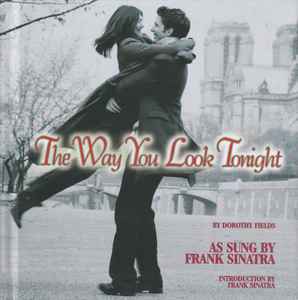Few songs have managed to capture the essence of youthful optimism, love, and countercultural spirit as perfectly as Sonny & Cher’s 1965 hit, “I Got You Babe.” This track wasn’t just a number one single—it was a cultural touchstone that reflected a rapidly changing America, a musical partnership built on chemistry, and an era where pop music could challenge social norms while remaining irresistibly catchy. The story of “I Got You Babe” is as much about the personalities behind it as it is about the music, and its enduring legacy cements it as one of the defining songs of the 1960s.
The Birth of a Duo
Cherilyn Sarkisian, later known simply as Cher, was a young woman with a striking contralto voice and a presence that could command attention even in a crowded room. Born in El Centro, California, in 1946, she had Armenian, Irish, and Cherokee roots, which contributed to her unique appearance and vocal timbre. At just 18, Cher was navigating the Los Angeles music scene, taking every opportunity to perform, record demos, and get noticed.
Sonny Bono, born Salvatore Phillip Bono in 1935 in Detroit, Michigan, was equally ambitious. A songwriter, producer, and performer, he had worked with some of the era’s biggest names and had developed an ear for catchy hooks and commercial appeal. Bono met Cher at a small Hollywood nightclub, and their connection was immediate, both personally and professionally. They began performing together, blending his deep, resonant baritone with her bright, warm voice in a manner that created a synergy few could resist.
Writing and Recording “I Got You Babe”
The story behind “I Got You Babe” is quintessentially mid-60s pop: Sonny Bono wrote the song, originally envisioning it as a commercial single with universal appeal. Recorded at Gold Star Studios in Los Angeles, the song features a minimal yet effective arrangement, primarily guided by the signature instrumental motif of the harmonica and the Phil Spector-inspired “Wall of Sound” production techniques. Bono’s decision to keep the instrumentation sparse allowed the vocals to shine, which was crucial for a duet that relied heavily on the charm and interplay between the two singers.
The recording session itself was straightforward. Bono and Cher’s vocal chemistry came through immediately. Their alternating verses and unison choruses created a conversational quality that felt intimate yet broadly relatable. The lyrics are simple, but their directness captures the essence of young love:
“They say we’re young and we don’t know
Won’t find out until we grow
Well I don’t know if all that’s true
‘Cause you got me, and baby, I got you”
This sentiment struck a chord with listeners of the time. It wasn’t just a declaration of love; it was a statement of defiance against societal expectations, embracing a countercultural ethos that would define the 1960s.
Chart-Topping Success
Upon its release in July 1965, “I Got You Babe” quickly climbed the charts. It reached number one on the Billboard Hot 100 and remained there for three weeks, marking Sonny & Cher’s emergence as one of the decade’s most prominent acts. The song also enjoyed international success, topping charts in the United Kingdom and Canada, and solidifying the duo’s appeal across the Western world.
What set this track apart from many other pop hits of the time was its blend of innocence and edge. The production was clean, almost minimalist, but the energy of the vocals and the playful back-and-forth between Sonny and Cher made the song feel immediate and alive. Critics praised the song for its catchy melody, clever lyrical phrasing, and the duo’s chemistry, which seemed to transcend the record itself.
Cultural Impact
While “I Got You Babe” is often remembered as a quintessential love song, its significance extends far beyond the charts. The mid-1960s were a period of immense social and cultural upheaval. Young people were questioning traditional norms, experimenting with new lifestyles, and expressing themselves through fashion, music, and art. In this environment, Sonny & Cher’s image and music were emblematic of youthful independence and optimism.
Cher’s mod-inspired fashion—mini skirts, bold patterns, and distinctive hairstyles—alongside Sonny’s tailored suits and mop-top hair, made them style icons in addition to musical ones. They embodied a blend of sophistication and counterculture that appealed to teenagers and young adults alike. The song’s message of commitment and partnership resonated not only with romantic ideals but also with a broader sense of solidarity and hope.
Television and Multimedia Influence
The popularity of “I Got You Babe” was amplified by Sonny & Cher’s ventures into television. Their variety shows in the late 1960s and early 1970s, particularly The Sonny & Cher Comedy Hour, showcased their playful rapport, humor, and musical versatility. On screen, the song was often performed with simple choreography and playful interactions, further reinforcing the duo’s image as the archetype of young, loving partners.
Television appearances helped cement the song’s status as a cultural phenomenon. It became more than a record; it was a statement of identity for a generation embracing the social changes of the 1960s. Moreover, the song’s enduring popularity led to its inclusion in countless films, commercials, and media moments over the decades, ensuring that each new generation of listeners encountered it in some form.
Musical Analysis
Musically, “I Got You Babe” is deceptively simple. The song is written in a standard 4/4 time signature, with a straightforward chord progression that emphasizes the vocals. The alternating verses allow for a playful exchange, with Sonny often providing a grounded, deeper tone while Cher’s higher register lifts the melody, creating a pleasing contrast.
The harmonica riff, which recurs throughout the track, adds a folksy element, tying the song to the contemporary folk revival of the 1960s while maintaining its pop sensibility. The production techniques, influenced by Phil Spector’s Wall of Sound, are restrained but effective, providing enough depth to support the vocals without overwhelming them. The combination of these elements—simple melody, effective arrangement, and vocal interplay—creates a timeless charm that has ensured the song’s longevity.
Covers and Legacy
Over the decades, “I Got You Babe” has been covered, reinterpreted, and sampled countless times. Artists across genres—from punk and reggae to alternative rock—have paid homage to its enduring appeal. Notable renditions include those by UB40, Cher’s own solo performances, and the 1993 cover by Cher and her then-partner, Sonny Bono, for the movie Chasing Amy. Each version preserves the song’s core charm while offering a fresh perspective.
Its inclusion in film soundtracks has further cemented its place in pop culture. Most famously, the song was memorably used in the 1993 film Groundhog Day, where Sonny & Cher’s voices play during a scene that underscores the repetitive, yet hopeful, cycles of life and love. The song’s playful innocence and romantic certainty provide a perfect counterpoint to the film’s existential humor, demonstrating how its emotional resonance transcends the era in which it was created.
Personalities Behind the Song
Understanding the appeal of “I Got You Babe” requires recognizing the personalities behind it. Sonny Bono, while often remembered primarily as a singer, was a shrewd producer and songwriter who understood the mechanics of pop success. His ability to craft a song that was both commercially viable and emotionally resonant speaks to his talent as a songwriter.
Cher, on the other hand, brought charisma, vocal talent, and a distinctive presence that transformed the song from a simple love ballad into a cultural milestone. Her contralto voice adds warmth and depth, perfectly complementing Bono’s baritone. Together, they created a dynamic that felt genuine, playful, and aspirational—a young couple united not only in love but in artistic vision.
Influence on Pop Music
“I Got You Babe” influenced generations of musicians, particularly in the realm of pop duets. Its structure—alternating verses, unison choruses, and playful back-and-forth—became a template for many subsequent male-female duets. The song also demonstrated that pop music could convey personality and character beyond mere melody and lyrics. Sonny & Cher’s ability to infuse charm, humor, and individuality into the recording set a precedent for artists seeking to merge musicality with performance persona.
Furthermore, the song helped bridge the gap between the folk revival and mainstream pop. Its acoustic elements and conversational delivery nod to the folk movement, while its catchy hook, polished vocals, and chart success solidify it as a pop classic. In doing so, “I Got You Babe” played a small but crucial role in broadening the stylistic boundaries of mid-1960s pop music.
Cher and Sonny’s Later Careers
While “I Got You Babe” was the breakthrough for Sonny & Cher, both artists went on to achieve remarkable individual successes. Cher’s solo career flourished, with hits spanning decades, including “Gypsys, Tramps & Thieves”, “If I Could Turn Back Time”, and her Oscar-winning performance in Moonstruck. Her career has been marked by reinvention, longevity, and an unparalleled ability to connect with audiences across generations.
Sonny Bono also made a significant mark beyond music, transitioning into politics and serving as a U.S. Congressman from California. Though his later career shifted away from entertainment, the impact of his musical legacy, particularly through “I Got You Babe”, remained ever-present.
Enduring Popularity
More than 60 years after its release, “I Got You Babe” continues to captivate audiences. Its simple yet profound celebration of love, combined with the magnetic personalities of Sonny & Cher, ensures that it remains relevant. From weddings to nostalgic radio playlists, the song evokes a sense of innocence, joy, and optimism—a reminder of an era when music could unite generations.
Its appeal lies in its universality. Unlike many hits that feel tied to a specific time or cultural moment, “I Got You Babe” possesses a timeless quality. The themes of love, partnership, and mutual support are as resonant today as they were in 1965, and the playful chemistry between the duo makes the song feel immediate, personal, and genuine.
Conclusion
“I Got You Babe” is far more than a 1960s pop hit—it is a cultural artifact, a musical declaration of love and defiance, and a showcase of two remarkable talents coming together in perfect harmony. Sonny & Cher captured the spirit of a generation, blending folk, pop, and a dash of countercultural attitude into a song that continues to charm, inspire, and entertain.
In the grand tapestry of 20th-century music, few songs stand as enduring symbols of youth, love, and optimism like “I Got You Babe.” It reminds us of the magic that happens when talent, personality, and timing converge, creating a moment that transcends its era. Even decades later, the song’s lilting melody, memorable lyrics, and playful interplay between Sonny & Cher remain as fresh and captivating as ever, ensuring that “I Got You Babe” will continue to be celebrated for generations to come.



